The Other American Muscle Car
Author:C.L. Zinn II
Source: Heacockclassic.com
The starting point for the AMX came when American Motors hired Dick Teague as assistant director of design in 1959. Three years later he became vice-president of Automotive Styling and a new era began at AMC. Teague’s job was to take American Motors from being a small economy car builder to a company more competitive, on a broad scale, with the Big Three (Ford, GM and Chrysler). Many historians say American Motors should have stayed with building only small cars, or at least small and midsize cars, and shied entirely away from building larger models, because Ford, GM and Chrysler owned that market segment.
In the end, perhaps nothing would have made a difference in AMC’s fate, but for one brief period in the late 1960s, America’s number four automaker managed to butt heads with Detroit’s Big Three and give them a run for their money with the AMX and Javelin.

In the 1960s the one thing American Motors needed was an attention getter, something to pull the younger “in crowd” into the dealer showrooms. After the Rambler Tarpon, a sporty concept car that evolved into the not-so-sporty Marlin, American Motors unveiled the AMX concept at the SAE (Society of Automotive Engineers) convention at Cobo Hall in January 1966. The car made its public debut on February 18 at the 58th annual Chicago Automobile Show. The AMX displayed at that show, a two-door sports coupe with a rear “Rambleseat,” was a non-running fiberglass concept car.
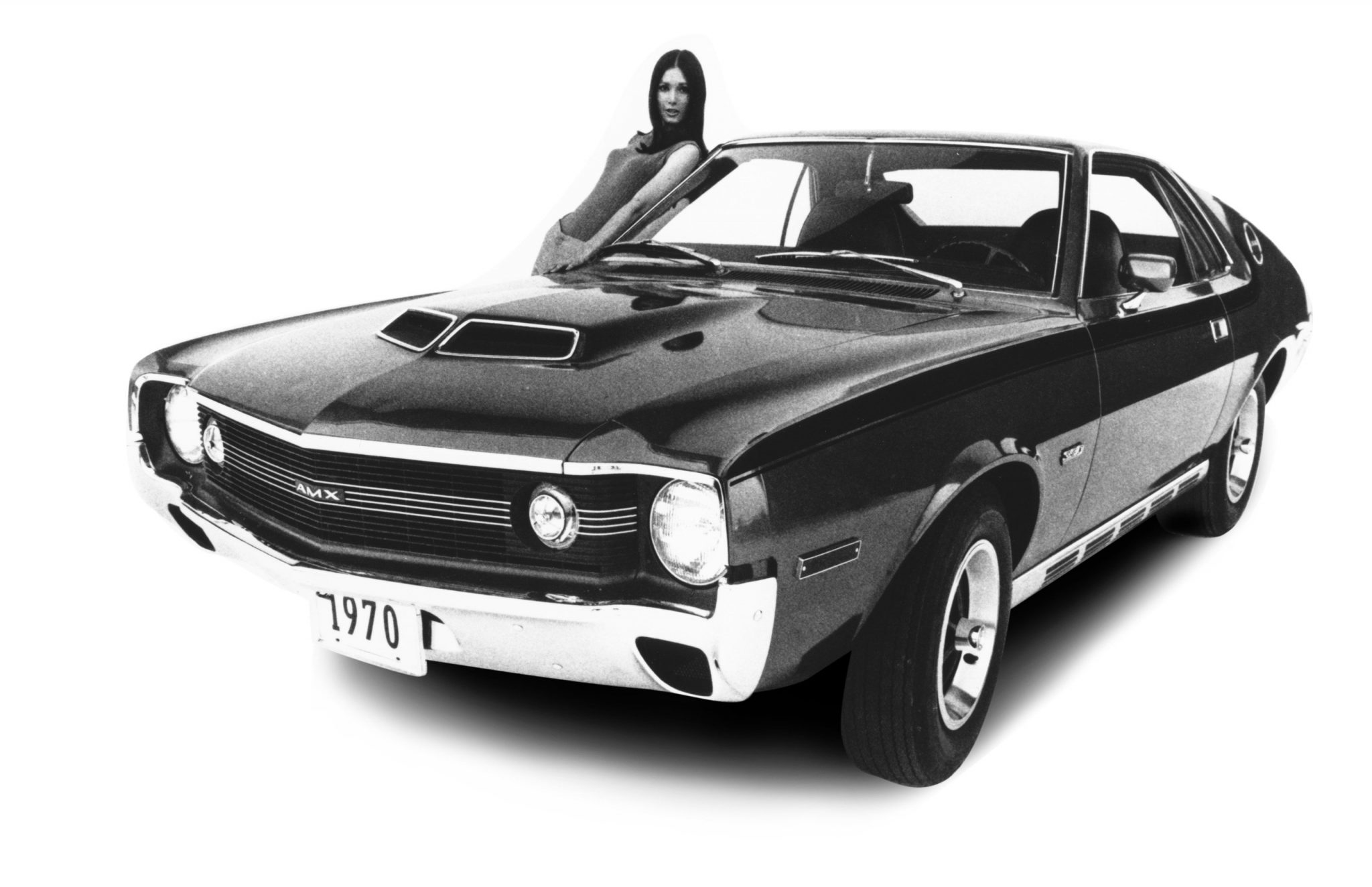
The AMX concept was made from start to finish at the old Nash Motor Company (American Motors Corporation) facility at 14250 Plymouth Road, in Detroit, which was American Motors World Headquarters at the time. The AMX started from drawings done by a number of artists (about 20 men working full-time). Quite a few ideas were taken from Erick Kugler’s drafting table in January or February 1965. From there, Bill Mitchell and his men in the wood shop built a wooden platform for the clay model. The next step was making the styling, putting on the clay and coming up with the right surfaces. Chuck Hosper, lead clay modeler in Chuck Mashigan’s Advanced Studio, headed the clay workup. From there it went to the fiberglass shop. A plaster mold was taken off the clay model and a fiberglass body was made. The final step was painting the body, making and mounting all moldings and trim work, as well as choosing and mounting the wheels and tires.

The public’s reception was outstanding, but now they wanted to see a real running, driving AMX. American Motors did just that, and one better, when they came up with Project IV. AMC debuted Project IV on June 20, 1966, at the New York Auto Show. It consisted of three new non-running concept cars—a four-door sedan named Cavalier, done in Chuck Mashigan’s studio; a two-door sedan named Vixen, also done in Chuck’s studio; a two-door hard top named AMX II, finished by Vince Gardner; and the AMX, only now it was a fully running car.
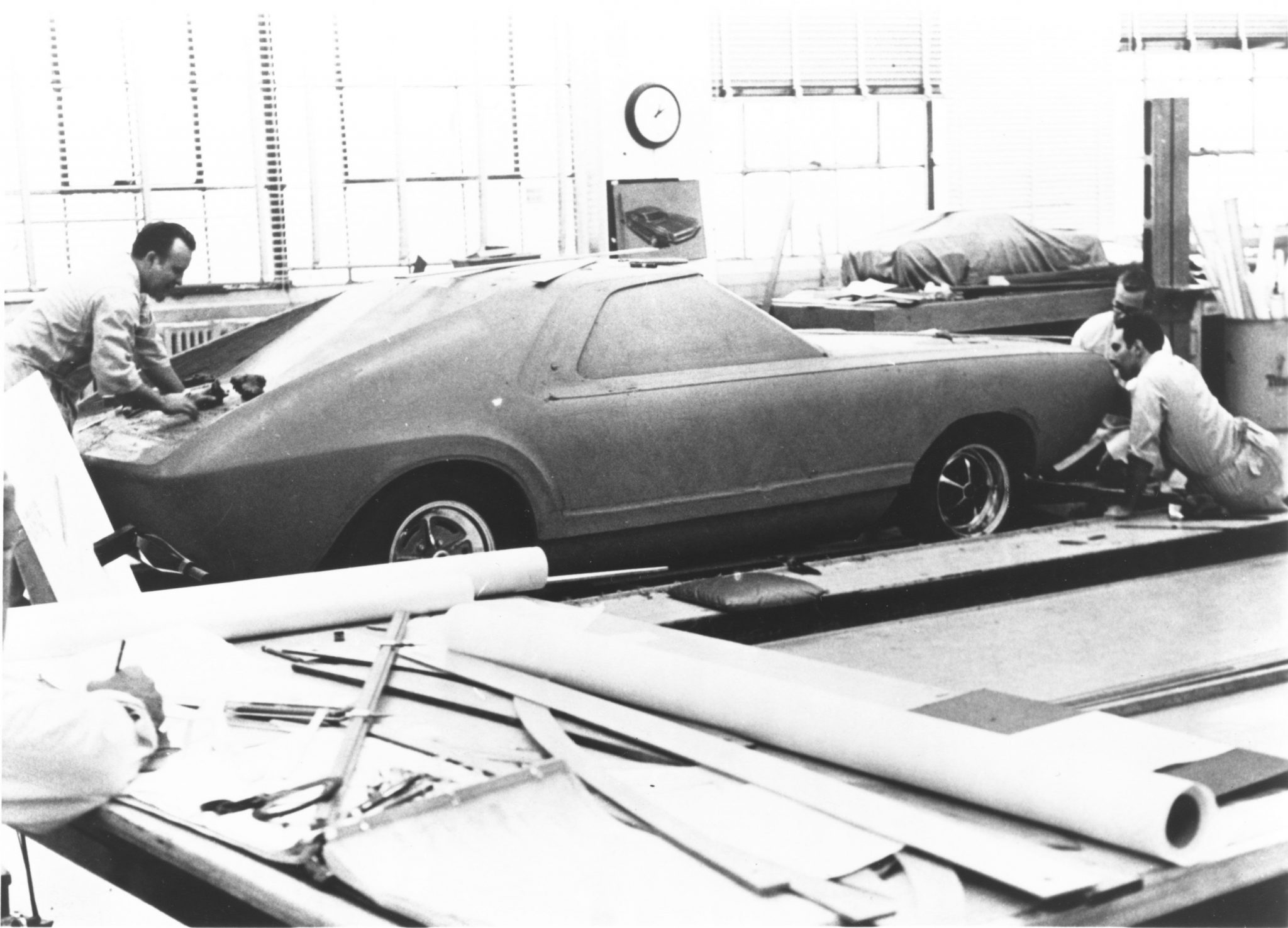
Handmade on a modified 1966 Rambler American chassis, the coachwork for the AMX had been done in Torino, Italy, at the renowned Carrozzeria Vignale (coachbuilder to Ferrari and other Italian marques), where true craftsmen hand-hammered metal body panels. Mashigan spent two weeks in Italy overseeing the startup of this car, which was fabricated from scratch in only 90 days! It was delivered just in time for the New York Auto Show.

Plans for this handmade car were worked on farther in advance then most know. Dick Teague started corresponding by letter with the people at Vignale as early as October 1965. They knew what AMC might want well in advance, but didn’t act on building the metal car until the last minute. That’s because upper management took time making the decision to do the AMX. After all, why build an expensive handmade metal prototype to pre-sell a production car you might not build? You might ask why a hand-built AMX instead of a Javelin? AMC wanted the element of surprise. Everyone knew, with the lackluster success of the Marlin, American Motors had to build a pony car to compete with the Mustang and Camaro. But what the public didn’t know was that American Motors was working on a two-door sports coupe as well.
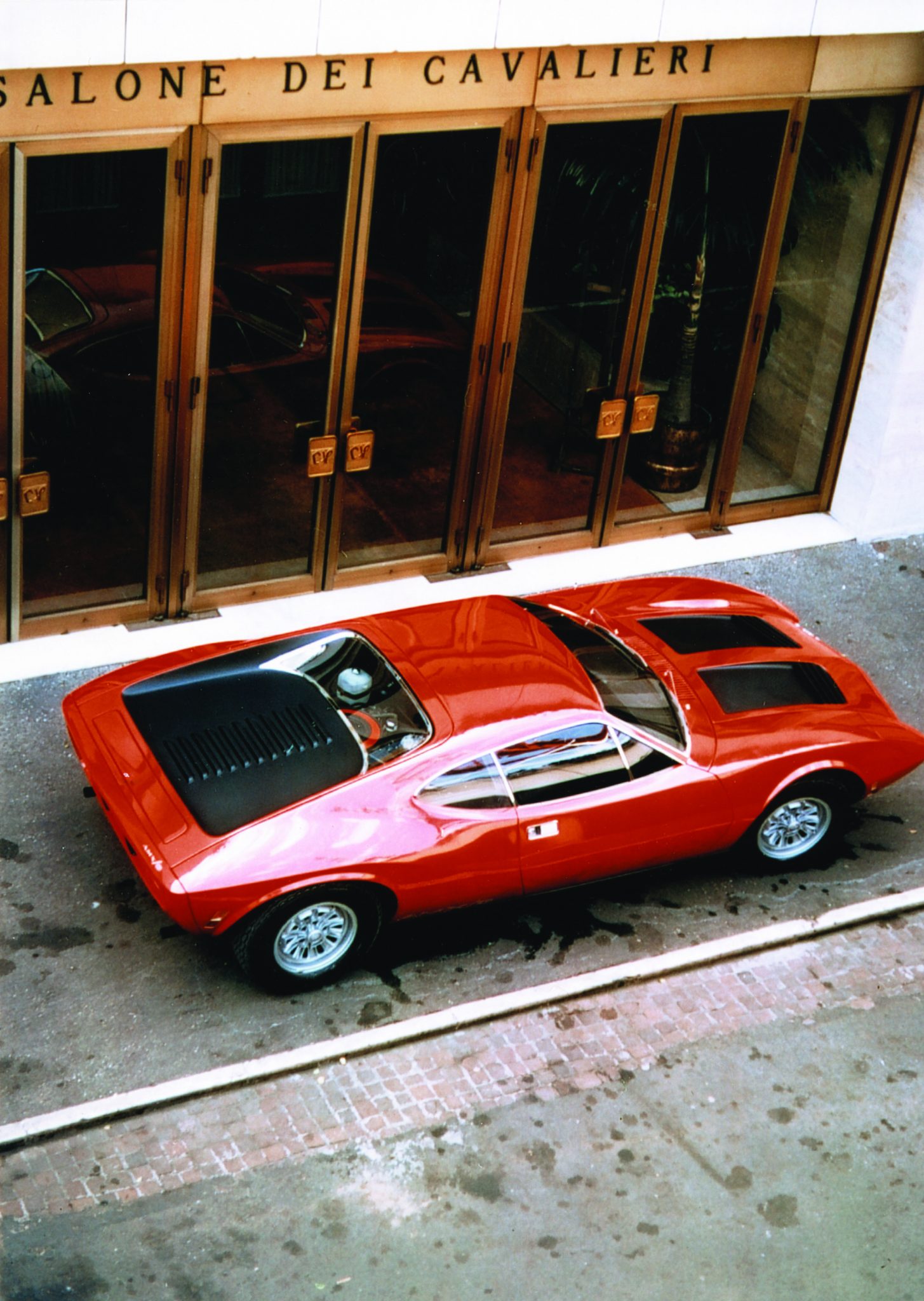
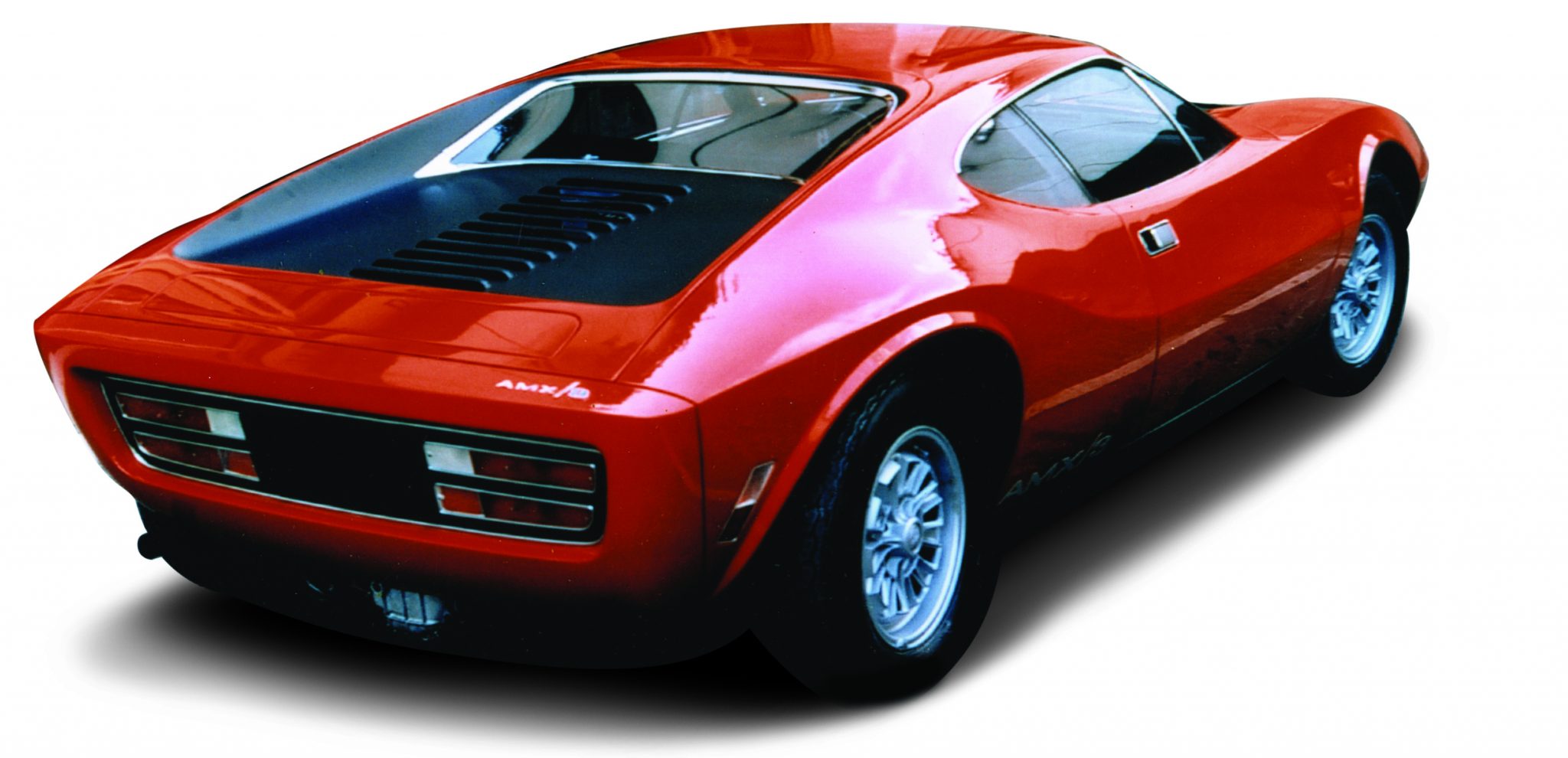
AMC management knew that the AMX was going to need more help getting off the ground than the Javelin, after all, Mustangs and Comaros were selling like hotcakes and the pony wars were being fought heavily. The work on American Motors’ production pony car had already started in 1965 with the Rogue, later to become the Javelin. The idea behind Project IV was to show the public, and the bankers (as money was always tight), that AMC was an innovator. Project IV served as an image builder to the youth market, which marketing planners hoped to tap with the AMX and Javelin. American Motors needed this desperately to be able to get away from the “Grandma & Grandpa’s Rambler” image.
The concept and prototype AMX cars differed from the production AMX in that the concept and prototypes had a “Rambleseat,” a classically inspired rumble seat right out of the 1930s. The prototype also had small jump seats that could be used if the “Rambleseat” wasn’t. Of course, AMC knew from the start that they couldn’t build the cars with a rumble seat for safety reasons, but they wanted to draw attention to the AMX, and the “Rambleseat” was just the ticket.

To save money, AMC made a two-seat sports coupe from the clay model of the production Javelin, changing only the grill, hood, door glass, quarter glass and roofline through different quarter panels. The four cars, the AMX II, the Javelin, and both the AMX show car and production AMX, were being made basically at the same time but in different studios.
The clay model of the production Javelin was done in Bob Nixon’s American Studio where Fred Hudson (Bob’s boss at the time) oversaw the development of the front end. Then the heavy clay model was carefully moved to Mashigan’s advanced studio so they could save time and money working on only half of the clay model. This also showed the bankers again how smart and thrifty the idea of making two cars out of one would be. They started from the rear door edge back, carving and getting the lines of the car just right for the one-foot shorter car (12-inches shorter due to lack of back seat), and changing the roofline through the rear quarter panel. They then finished the rear of the car, as well as coming up with a different hood and grill for the AMX.
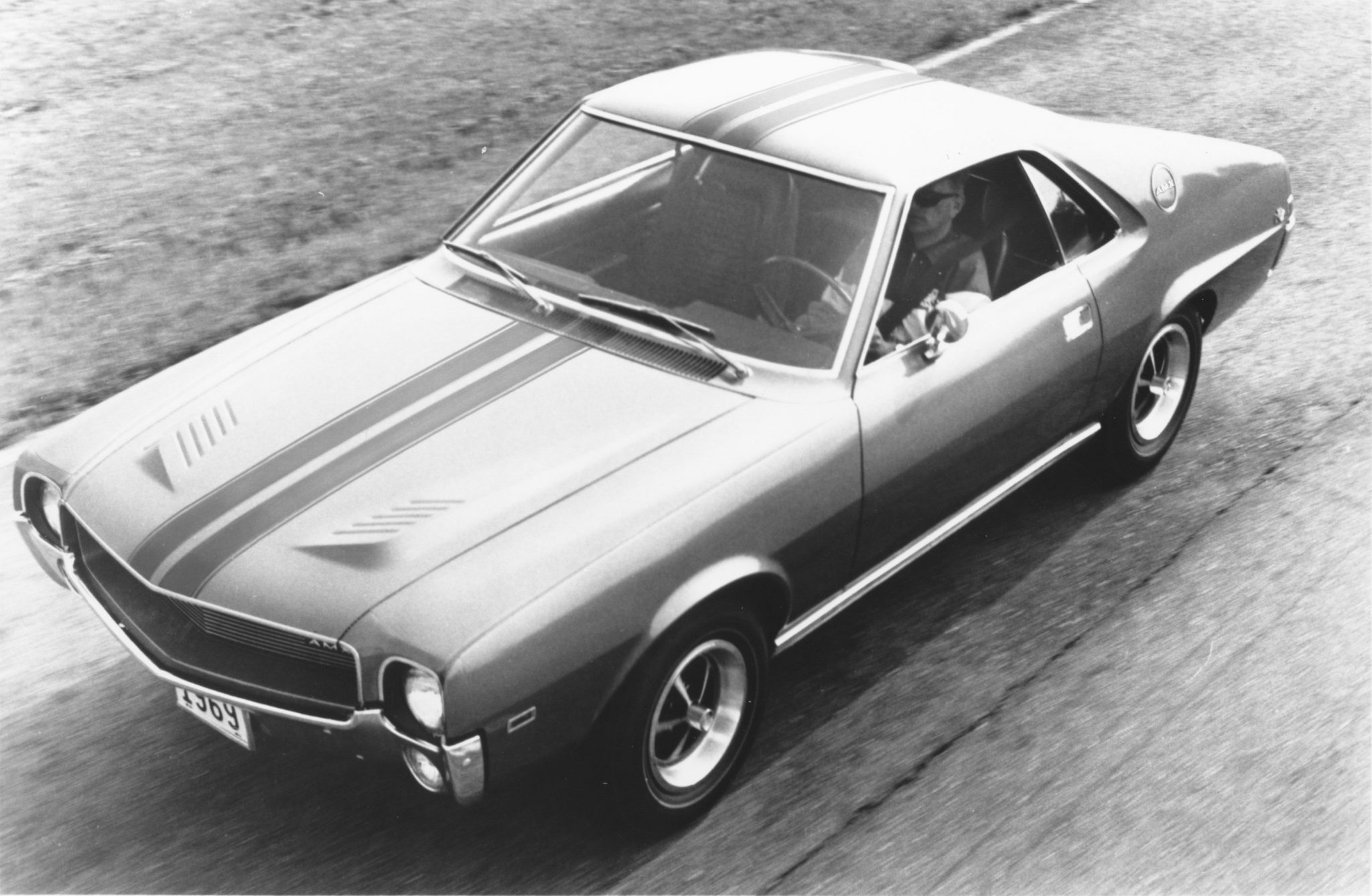
Keep in mind, while all this was going on, Jim Alexander, Bob Bristow, Bill St Clair, Alex Cyers and Jim Pappas, to name a few, were drawing and making clay models of the instrument panel, door panels, seats, and the rest of the interior. AMC engineers were also playing a big part in the design of the entire car, both inside and out. Although the production AMX was every bit the muscle car of its Ford, GM and Mopar competitors, and being a true two-seater, an honest American sports car to boot, sales were never as high as AMC anticipated, and after only three years and a total production run of 19,134 from 1968 to 1970, the AMX was discontinued.
From 1971 to 1974 AMX was reduced to an option on the Javelin, and the Javelin itself was dropped after 1974. Actually the 1971-1974 cars handled the best; they just didn’t have the same appeal.

In a somewhat less than glorious reprise, the AMX name returned in 1977 as an option on the AMC Hornet. In 1978 AMX was an option on the Concord. The last production AMX cars were made in 1979 and 1980 as an option on the Spirit. After that, there was a single AMX Turbo made out of house by Autodynamics of Troy, Michigan. John Starr did the original rendering and Dick Teague oversaw the project. The car was made for the PPG Indy Car World Series and was to be used as a pace car during the 1981 season.

The AMX is best remembered in its two-seat form, its true form, if you will. It was its lightest and fastest as a two-seater, winning many races on the quarter-mile drag strips across America, and on racetracks by Team AMX, a group of 20 AMC employees headed up by Jim Alexander. A total of 106 speed and endurance records were also set by Craig and Lee Breedlove, not to mention the times those few AMX cars that were in the neighborhood cleaned the clocks of the local bad boy Fords, Chevrolets and Mopars.

Today, the original two-seat AMX is receiving well-deserved recognition on various automotive television shows and in books and magazines around the world. The AMX has been featured in car calendars, on collector cards, in die cast models of different sizes, and the real cars are winning at top Concours d`Elegance events around the country. The AMX had a short but memorable existence.
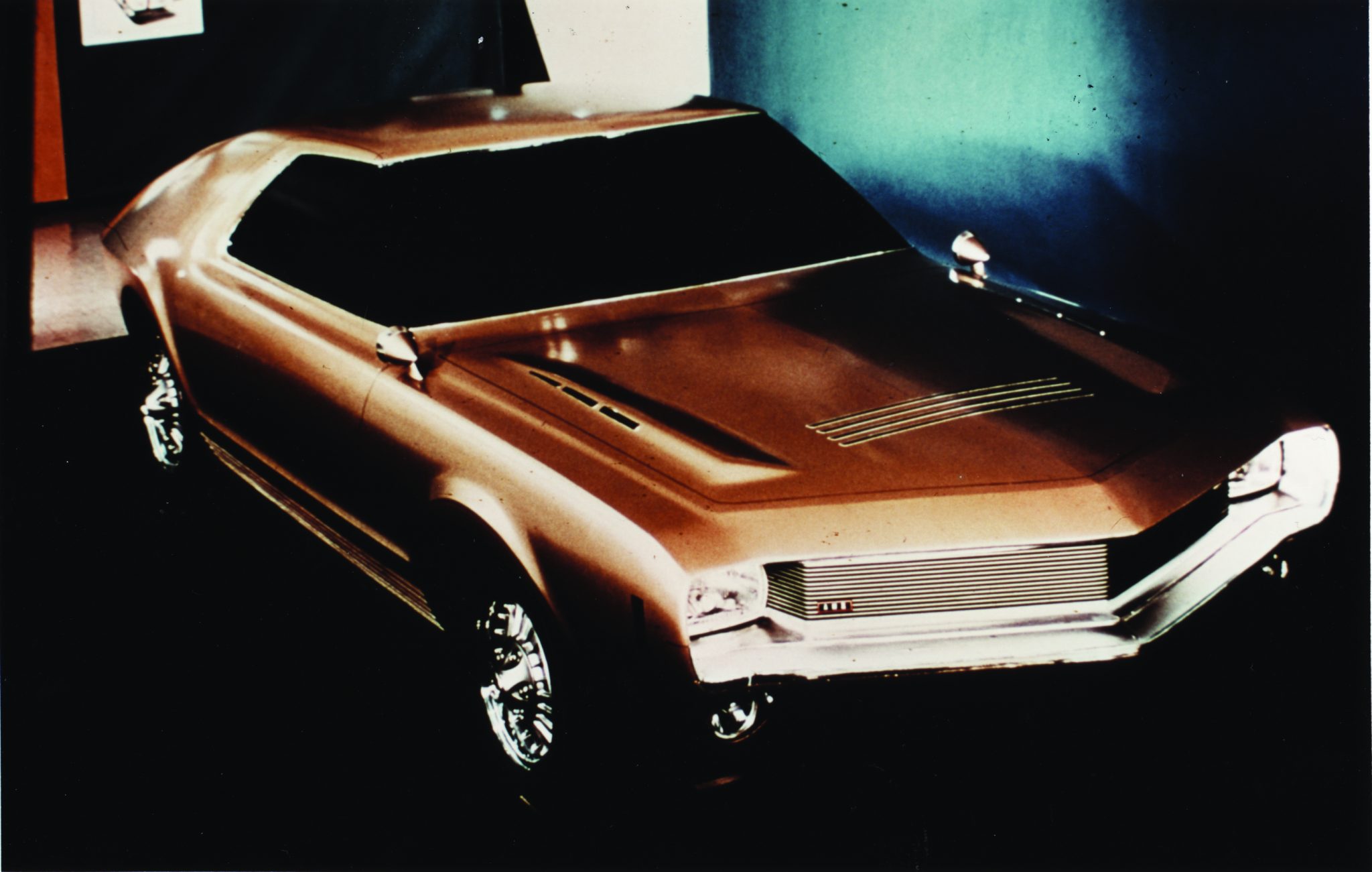

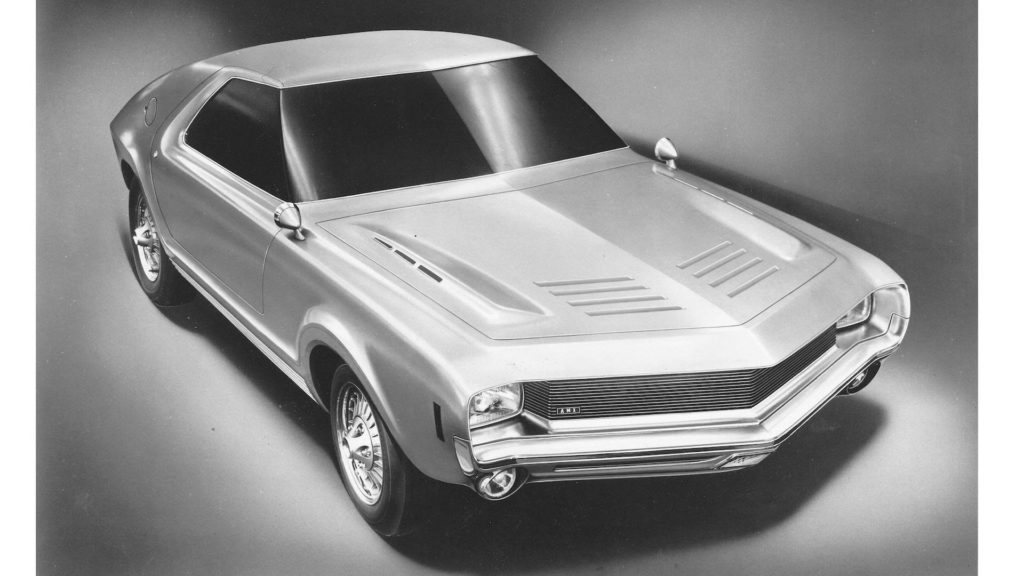
I’m so tired of hearing”An AMX is a javelin with no backseat”. This documents out in the open that AMX is the original and that the Javelin was contrived to meet the marketplace.
100% true. People love to open their mouth and prove how ignorant they are.
Y-T: Glad you pointed out that the Javelin and AMX are indeed two wonderful beauties of AMC.
At one time I owned five 1970 AMX 390’s parked bumper to bumper in my driveway! My love began when I bought my first AMX in 1972 for $550.00, a 290 4 speed car, man… what great cars! I had many AMC cars, Machines, Hornet 360’s, Gremlins, Rebel ST’s and still have a 390 engine in the garage that I plan to put in my 1980 Jeep HONCHO J-10. Quite the contrast to my 1984 Mercedes 300CD, AH! to be young again.
I own a 1973 AMX four speed really like the fact that the car is not seen often today I also have a 1975 AMC HORNET X Hatchback AMC cars are so RARE these days really like all brands and I am Enjoy these articles that come out as well Nice Writing on the evolution of the AMX
When I was 17 I had a 1969 Javelin SST that my Dad bought for my Brother back in 1982 and did not want it so he gave it to me to fix up and I let my Bro talk me into doing something to I can not talk about it was so stupid. An it sat there until I joined that ARMY in 1983. My Dad got rid of it and ever Since then I have wanted on and soon I will have my 1969 or 70 Javelin with a 390 in it. To me the Javelin was one Cool Muscle Car and to Day gets the O Hell Ya look. Over the Camaro and Mustang of the Day among real Gear Heads and true classic car lover’s.
Wish someone would produce a kit. So I could build this car. I loved AMC! I have owned 6.